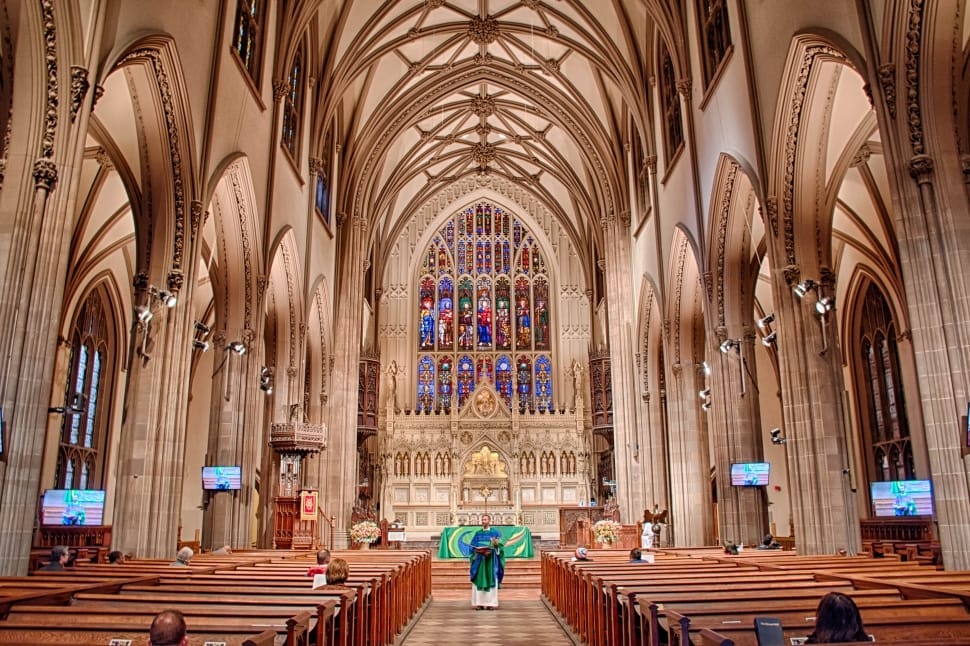The Origin of Silent Night
The hymn Silent Night was first performed on Christmas Eve in 1818 in Oberndorf, Austria. It was written by Joseph Mohr, a young priest, and set to music by Franz Xaver Gruber, a local schoolteacher and organist. The song was created out of necessity when the church organ broke down just before the Christmas service.
Mohr's poetic lyrics and Gruber's gentle melody transformed the Christmas Eve service into an unforgettable moment. Accompanied by only a guitar, the song’s simplicity captured the beauty of the Christmas story. Over the years, it became a beloved Christmas hymn worldwide.
Silent Night was first introduced to American audiences by the Rainer Family Singers, a traveling group from Austria. Their performance of the hymn in 1839 at Trinity Church in Manhattan, New York, marked the song's debut in the United States. The singers captivated the audience with the hymn's gentle melody and message of peace, performed in its original German.
Trinity Church, known for its historic significance and Gothic architecture, was the perfect setting for such a solemn and beautiful carol. The performance left a lasting impression, and Silent Night quickly gained popularity, becoming a cherished part of American Christmas traditions. Its message of hope and serenity resonated deeply with those in attendance, spreading its influence far beyond the church's walls.
The Message of Silent Night
The lyrics of Silent Night reflect the peaceful and holy nature of Jesus’ birth. Phrases like “All is calm, all is bright” and “Holy infant so tender and mild” remind us of the serenity of that first Christmas night.
The hymn invites us to reflect on the miracle of Christ’s birth and the peace He brings to our lives. Its timeless message resonates with Christians of all denominations, reminding us of the hope and joy found in the Savior.
How Silent Night Spread Around the World
After its humble beginnings, Silent Night quickly gained popularity. Traveling musicians and choirs spread the song across Europe, and eventually, it became a global symbol of Christmas.
One remarkable story is its role during World War I. On Christmas Eve 1914, soldiers from opposing sides sang the hymn during an unofficial truce, creating a moment of unity amidst conflict. This event highlights the hymn's power to bring people together, even in times of turmoil.
Silent Night’s Role in Christmas Traditions
Today, Silent Night is a staple of Christmas celebrations. It’s often sung during candlelight services, bringing a sense of awe and reverence to worship. Families and choirs alike treasure its gentle melody, making it a highlight of the holiday season.
The hymn also inspires acts of kindness and charity. Its message of peace and goodwill motivates many to share love and generosity, reflecting the true spirit of Christmas.
Why Silent Night Still Matters Today
In a world filled with noise and chaos, Silent Night offers a moment of calm and reflection. Its soothing melody and meaningful lyrics remind us of God’s love and the hope found in Jesus Christ.
As we sing this hymn each Christmas, we are reminded to embrace peace, kindness, and faith. Silent Night remains a timeless reminder of the Savior’s birth and the joy He brings to all who believe.
Closing Thoughts
Silent Night is more than a hymn; it is a prayer for peace and a celebration of God’s love. From its humble origins to its global impact, this song has touched millions of hearts.
Let us cherish its message and let it inspire us to spread peace and love during this Christmas season and beyond. As we sing, may we remember the true meaning of Christmas: the birth of our Savior, Jesus Christ.







Isn't it amazing what you feel when singing this...because you know you didn't read it! It does bring a calmness to me anyway...
Thank you for sharing, Faith!